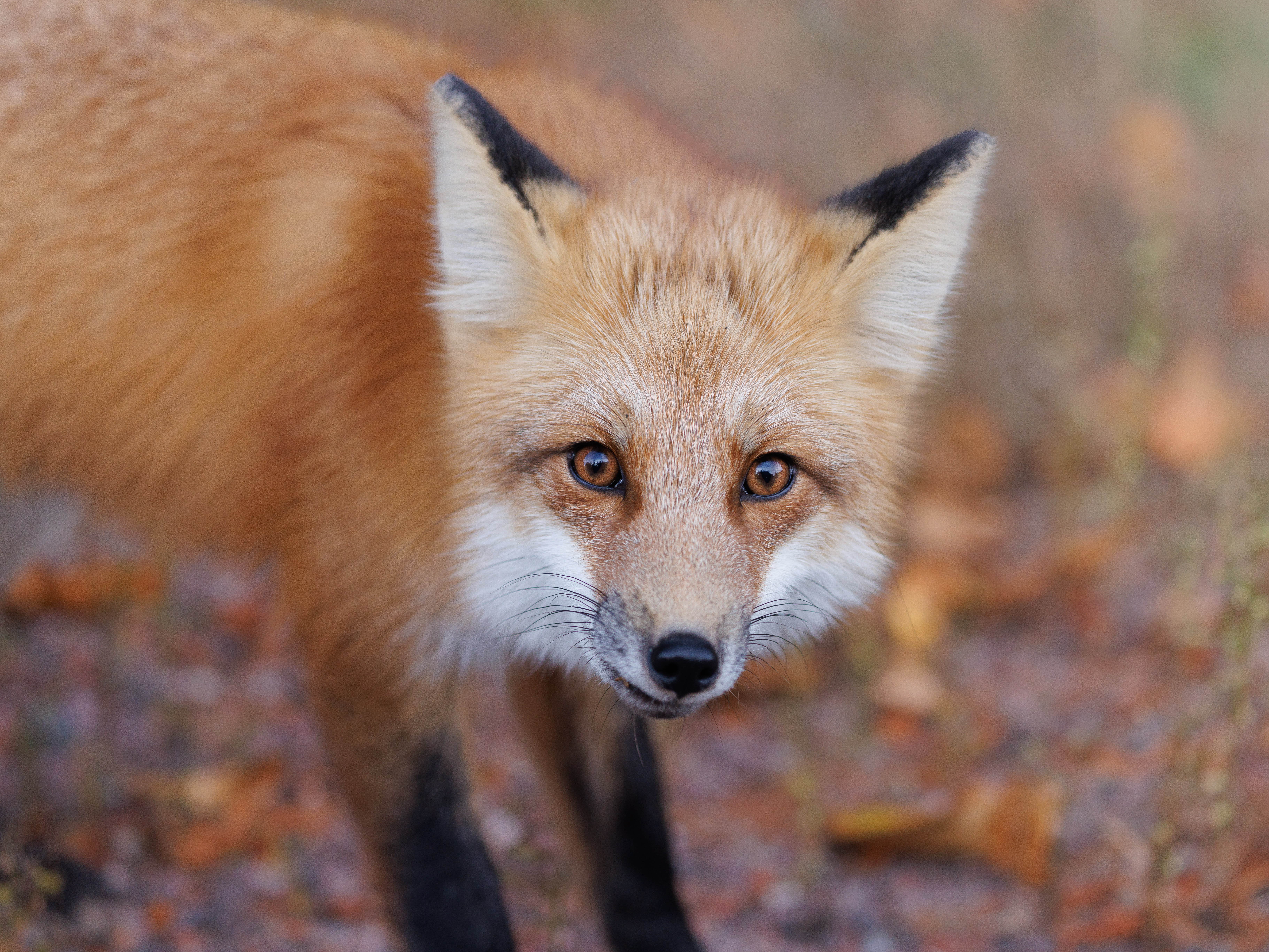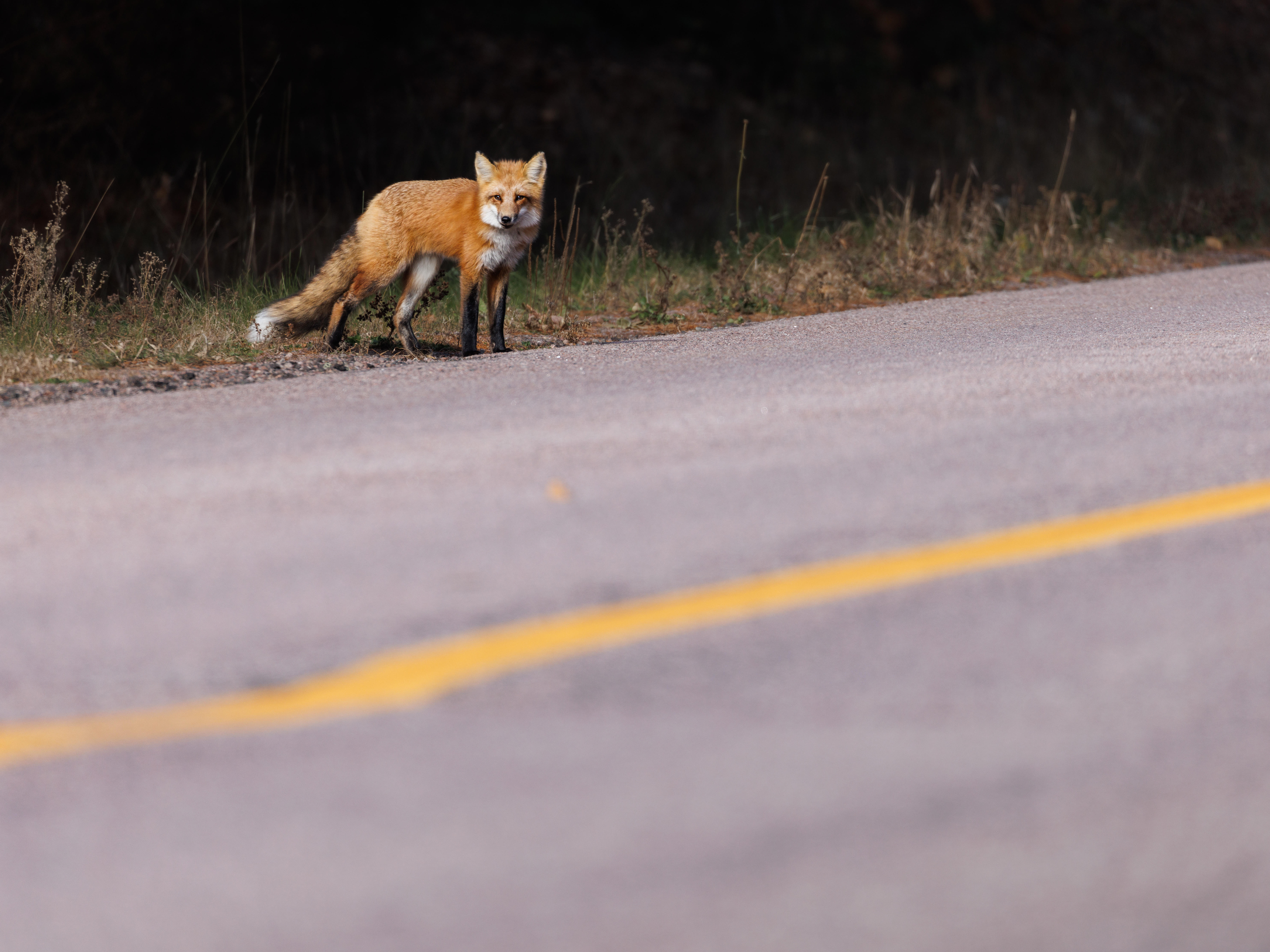
While this image might seem like a sweet moment with an adorable fox, this photo doesn’t illustrate the reality of the situation.
While driving through an Ontario Provincial Park, we noticed this fox trotting along the highway from a distance. Carefully, we pulled onto the shoulder and stayed in the car, in hopes of getting a few photos as the fox went along about its business.
But as soon as we pulled over, the fox made a beeline directly (and I mean directly) towards the car. There, the fox stood, staring up intently at the passenger window, refusing to move for several seconds. This is not natural behaviour for a wild fox.
What is food conditioning?
Food conditioning happens when wild animals begin to associate humans (and in some cases, our vehicles) with food. As a result, they begin to alter their natural foraging and hunting behaviour to access food.
It’s important to note that food conditioning includes both feeding wildlife directly (e.g. offering a fox a piece of your lunch from the car window) AND indirectly (e.g. leaving unattended food or garbage out, tossing trash/food items from a car window). Both have consequences for our wildlife and their ecosystems, and we have the responsibility to avoid them.
Why is food conditioning wildlife along our roadways so problematic?
1. It’s not healthy: Human food is not healthy for wildlife, and they do not need food from us to survive. Foxes and other wildlife have specialized diets, and they can become malnourished (or even die) if fed the wrong foods. They also can’t distinguish between their food and items like wrappers or foil, which can make them sick.
2. It’s unnecessary: Foxes are incredible predators, equipped with skills to survive and hunt for themselves and their families. They are also highly intelligent and can become dependent on artificial food sources if they’re rewarded for waiting for passing cars (rather than hunting and foraging).
3. Increased roadside collisions: Wildlife being fed along roads tends to stay near roads, which increases the chance of animal-vehicle accidents, injuries, and death. Wildlife can also become far more likely to cross busy roadways to get to a (potential or real) food source.
4. Feeding leads to public health concerns: When wildlife becomes food-conditioned along our roads and highways, they tend to gather in larger numbers where they’re being fed (whether that’s happening directly or indirectly when we toss trash out a window or don’t properly discard our garbage). Too many animals in one area can increase the risk of parasites and diseases being transmitted - both to other wildlife and even to humans.
5. Changes in population dynamics: Additionally, as more animals gravitate towards roadways, we can start to see higher densities of certain species (like foxes), which can alter the dynamics of their whole ecosystem.
6. Altering natural behaviour: If wildlife is being rewarded for hanging out by roads or approaching vehicles, they will begin to spend less of their precious time and energy hunting and scavenging, and more time waiting around for food handouts (which are not reliable or sustainable food sources). Perhaps even more importantly though, as Lesley Sampson, Founding Executive Director for Coyote Canada says best: “Food and/or human conditioning increases a wild animal’s proximity tolerance to people (and sometimes, our vehicles), and places where there is human activity.” As a result, the chances of human-wildlife conflict increase substantially.
7. A trickle-down effect: Altering natural hunting behaviour and increasing their proximity tolerance to humans and/or roadways can also have a long-term effect on mammals like foxes, who will teach their kits to seek food the ways they have learned to be most effective. So, food conditioning can affect not just the fox waiting by the roadside, but the next generation of foxes as well.

When we condition wildlife to roadside feeding, we are adding a significant risk to wildlife, the public, and the ecosystem.
About the Author: Cari Siebrits is a wildlife photographer and writer, passionate about promoting peaceful coexistence between humans and the wild world. Driven by her lifelong awe of wildlife, and guided by her commitment to ethical photography and compelling storytelling, she’s an advocate for conservation, sustainable living, and public education. Through her images and her words, she hopes to share intimate moments in nature that connect communities with the wildlife around them.
Instagram: @WildlifeWithCari

